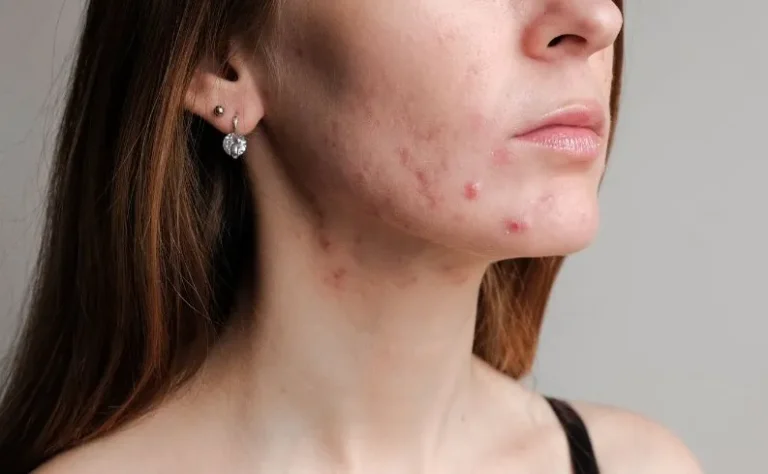Whether it’s an unexpected pimple before a big event or persistent blemishes, we’ve all experienced the frustration of dealing with acne. Spot treatments have become a staple in skincare routines, offering targeted solutions to reduce and eliminate blemishes quickly. Spot treatment products are designed to deliver potent ingredients directly to individual pimples, zits, or other skin imperfections, helping to reduce their size and prevent future breakouts.
In this comprehensive guide, we’ll explore what spot treatments are, how they work, the best ingredients to look for, and tips on how to effectively incorporate them into your skincare routine.
What Is Spot Treatment?
Spot treatment refers to the application of a concentrated skincare product directly on blemishes or areas prone to breakouts. Unlike general skincare products applied to the entire face, spot treatments are used in small amounts on specific areas. The primary goal of spot treatments is to reduce the appearance of blemishes, prevent them from worsening, and support the skin’s healing process.
Most spot treatments come in the form of gels, creams, or lotions and contain active ingredients that target excess oil, inflammation, and impurities, which often contribute to blemishes.
How Do Spot Treatments Work?
Spot treatments work by delivering potent ingredients directly to blemishes to combat underlying causes. Here’s how they function:
- Exfoliation and Unclogging Pores: Many spot treatments contain ingredients like salicylic acid, which helps exfoliate the skin and unclog pores. Clogged pores often lead to blemishes by trapping oil, dirt, and bacteria.
- Reducing Inflammation: Ingredients like sulfur have anti-inflammatory properties, helping to reduce the redness and swelling associated with blemishes. Reducing inflammation can help blemishes appear less noticeable.
- Managing Bacteria: Some ingredients in spot treatments, like tea tree oil, work to reduce the growth of bacteria on the skin, helping prevent further blemishes.
- Drying Out Excess Oil: Sulfur and clay-based treatments, for instance, help absorb oil, which can shrink blemishes and reduce their appearance.
- Preventing Future Blemishes: Spot treatments with ingredients like salicylic acid can prevent future blemishes by keeping pores clear of debris and dead skin cells.
Key Ingredients in Spot Treatments
Understanding active ingredients in spot treatments can help you choose the right product for your skin type and concerns. Here are the most common ingredients used in spot treatments:
1. Benzoyl Peroxide: Known for targeting blemish-prone skin, benzoyl peroxide works to manage bacteria and reduce inflammation. It’s available in different concentrations.
- Benefits: Quickly reduces the size of blemishes and calms redness.
- Drawbacks: Can cause dryness and may bleach fabrics.
2. Salicylic Acid: This beta hydroxy acid (BHA) helps exfoliate the skin, unclog pores, and reduce minor inflammation.
- Benefits: Gently exfoliates and prevents clogged pores, ideal for mild blemishes.
- Drawbacks: May cause dryness with overuse.
3. Sulfur: Sulfur is often used to absorb oil and dry out blemishes, making it suitable for sensitive skin.
- Benefits: Reduces oil and gently targets blemishes.
- Drawbacks: Has a strong smell and may cause dryness if overused.
4. Tea Tree Oil: A natural option with antimicrobial properties, tea tree oil can help reduce the appearance of blemishes while soothing irritated skin.
- Benefits: Antibacterial and anti-inflammatory properties, less likely to cause dryness.
- Drawbacks: Slower results compared to stronger ingredients.
4. Azelaic Acid: Known for its ability to reduce the appearance of post-blemish marks, azelaic acid is great for people dealing with both active blemishes and hyperpigmentation.
- Benefits: Helps fade post-blemish marks and is suitable for sensitive skin.
- Drawbacks: May take longer to show visible results.
How to Use Spot Treatments Effectively
To get the best results from your spot treatment, it’s essential to use it correctly and consistently:
- Cleanse Your Skin First: Always start with clean skin. Use a gentle cleanser to remove any dirt, oil, or makeup before applying your spot treatment.
- Apply a Small Amount: Spot treatments are potent, so apply a small amount directly to the blemish. Avoid unaffected areas to prevent dryness.
- Wait for It to Dry: After application, wait a few minutes for the treatment to dry before applying other products, like moisturizers.
- Use at Night: Nighttime application gives active ingredients time to work without sun exposure.
- Moisturize: Spot treatments can be drying. Use a light moisturizer to keep your skin balanced.
- Consistency Is Key: Use your spot treatment consistently, but don’t overapply, as it may lead to excessive dryness or irritation.
- Avoid Popping Blemishes: Resist the urge to pop blemishes, as it can cause scarring and inflammation. Let your spot treatment do the work.
Common Mistakes to Avoid
Using spot treatments effectively requires avoiding these common mistakes:
- Applying Too Much: More isn’t better; excessive product can cause irritation.
- Skipping Moisturizer: Moisturizing keeps skin balanced and prevents excessive oil production.
- Using Spot Treatments on Large Areas: Spot treatments are for specific blemishes, not large areas of the face. For widespread concerns, use a more general skincare treatment.
When to See a Dermatologist
While spot treatments can be effective for occasional blemishes, more persistent or severe concerns may require professional advice. If blemishes are painful or resistant to over-the-counter products, consider seeing a dermatologist for specialized care.
Conclusion
Spot treatments are a helpful tool for managing blemishes. With the right ingredients and proper application, spot treatments can help shrink blemishes, reduce redness, and improve the appearance of your complexion. By choosing a product that suits your skin type and being consistent, you can support clearer, healthier-looking skin. And if over-the-counter options aren’t enough, consulting a dermatologist is always a good choice for tailored care.
